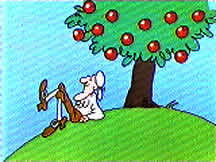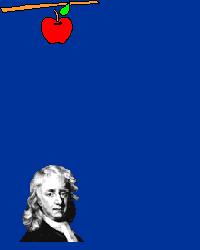
GRAVITY

http://earthquake.usgs.gov/image_glossary/images/gravity.jpg
With his mathematical accomplishments under this belt, Newton took an interest in motion and what forces impact it. After studying a book by Galileo on how things fell to earth, and also studying work by Johannes Kepler, who taught how planets circle the sun, Newton starting to question what kept planets in orbit, or more specifically, what kept the moon from crashing with the earth or the sun? Although many people say that his questions were answered while sitting under an apple tree and having an apple fall on his head. “This alleged accident supposedly prompted him to imagine that perhaps all objects in the Universe were attracted to each other in the same way the apple was attracted to Earth.” (Serway) Sadly, it wasn’t this simple for Newton to come up with a new theory, which we now know as the Law of Universal Gravitation. Newton concluded that the same force of attraction that causes the Moon to follow its path around the Earth also causes an apple to fall from a tree.

http://csep10.phys.utk.edu/astr161/lect/history/newtongrav.html
“ Newton’s Law of Universal Gravitation states that every particle in the Universe attracts every other particle with a force that is directly proportional to the product of their masses and inversely proportional to the square of the distance between them.”(Serway) The picture below illustrates the Law of Universal Gravitation. "Newton concluded that the centripetal force of the Moon or of any planet must decrease as the inverse square of its distance from the center of its motion. For example, if the distance is doubled, the force becomes one-fourth as much."( http://euler.ciens.ucv.ve/English/mathematics/newton.html)

http://csep10.phys.utk.edu/astr161/lect/history/newtongrav.html